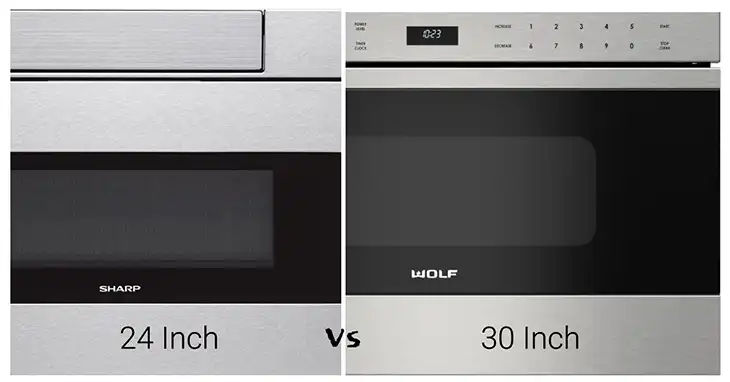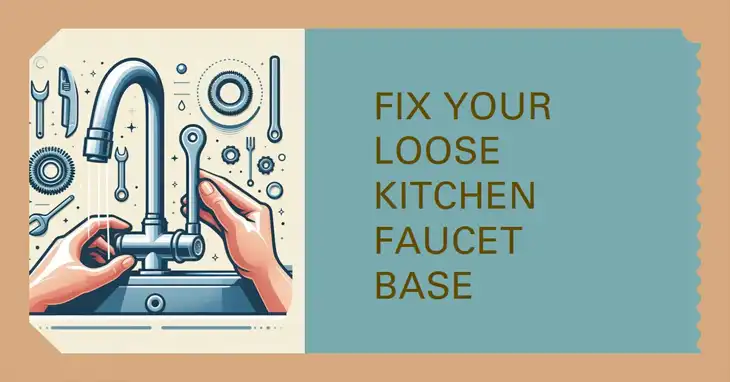What’s The Difference? Silicone Vs Plastic Utensils
In the ever-evolving world of kitchen tools, the debate between silicone and plastic utensils has been raging for years. As health-conscious consumers seek safer and more eco-friendly alternatives, silicone utensils have gained significant popularity. However, plastic utensils continue to dominate many households due to their affordability and convenience.
Silicone utensils offer superior heat resistance, safety, durability, and eco-friendliness, making them a smart investment for health-conscious and environmentally aware home cooks.
In this article, we’ll get into the key differences between these two materials, allowing you to make an informed decision for your kitchen needs.
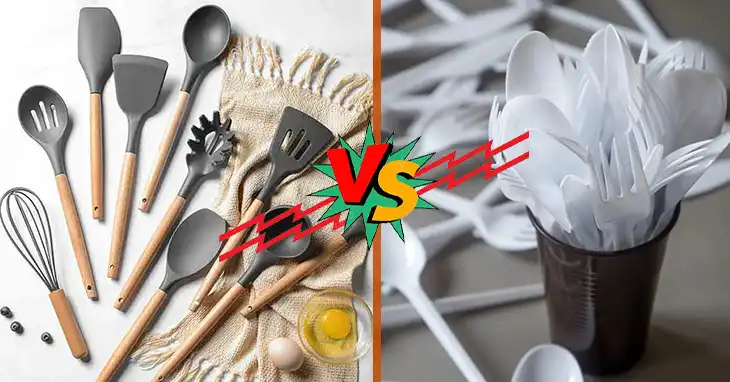
What are Silicone Utensils?
Silicone is a synthetic, rubber-like material made from a combination of silicon, oxygen, and other compounds. Silicone utensils are known for their exceptional heat resistance, with the ability to withstand temperatures up to 600°F (315°C). They are also flexible, making them ideal for non-stick cookware and delicate tasks like folding batters or scraping bowls.
The manufacturing process of silicone utensils involves molding the material into various shapes and designs, resulting in a wide range of tools such as spatulas, tongs, whisks, and baking mats. Silicone utensils are non-toxic and inert, meaning they won’t leach chemicals into your food, making them a safer choice for cooking and baking.
What are Plastic Utensils?
Plastic utensils, on the other hand, are typically made from petroleum-based materials like polypropylene or polyethylene. While affordable and lightweight, plastic utensils have a lower heat resistance compared to silicone, often limited to temperatures below 350°F (177°C). The manufacturing process of plastic utensils involves injection molding or extrusion, leading to a variety of common kitchen tools like spoons, forks, knives, and spatulas.
While plastic utensils are convenient and widely available, there are concerns about their potential to leach chemicals, especially when exposed to high temperatures or acidic foods. Additionally, plastic utensils contribute to environmental pollution due to their non-biodegradable nature.
Heat Resistance and Durability
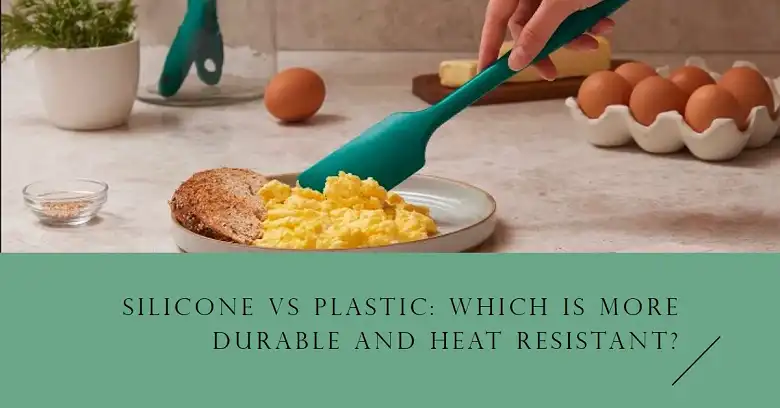
One of the most significant advantages of silicone utensils is their superior heat resistance. They can withstand high temperatures without melting, warping, or releasing harmful chemicals. This makes them ideal for tasks like stirring hot liquids, handling baked goods straight from the oven, or even using them as trivets for hot pots and pans.
On the other hand, plastic utensils have a lower heat tolerance and can easily deform or melt when exposed to excessive heat. This not only compromises their functionality but also raises safety concerns due to the potential release of harmful chemicals into your food.
In terms of durability, silicone utensils generally have a longer lifespan compared to their plastic counterparts. Silicone is a more resilient material that can withstand wear and tear, while plastic utensils are more prone to cracking, discoloration, and brittleness over time.
Safety and Toxicity Concerns
One of the primary concerns surrounding plastic utensils is the potential for the leaching of chemicals, particularly when exposed to high temperatures or acidic foods. Some plastics contain compounds like bisphenol A (BPA) and phthalates, which have been linked to various health issues, including hormonal disruptions and developmental problems.
In contrast, silicone utensils are generally considered safer and non-toxic. Silicone is an inert material that does not leach chemicals or react with food, making it a more health-conscious choice for cooking and baking.
Ease of Use and Cleaning
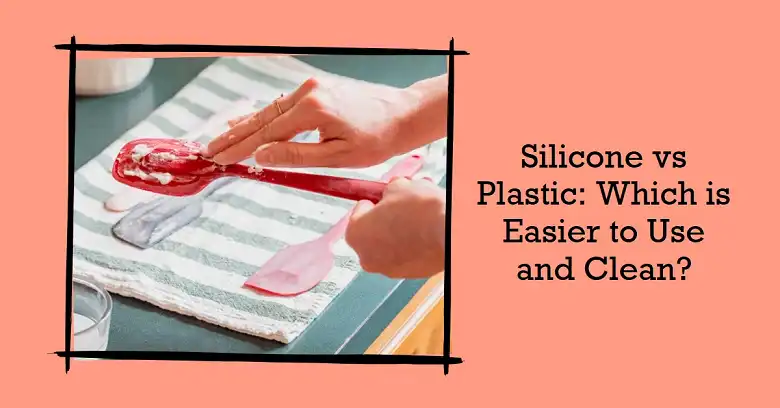
Silicone utensils are renowned for their flexibility and grip, which makes them easier to use and more comfortable to hold. Their non-stick properties also make them ideal for delicate tasks like folding batters or scraping bowls without damaging the surface.
When it comes to cleaning, silicone utensils have an edge over plastic. They are dishwasher-safe, and their non-porous surface prevents bacteria and food particles from accumulating, making them easier to maintain and keep hygienic.
Plastic utensils, on the other hand, can be more challenging to clean, as they are prone to scratches and crevices where food particles and bacteria can accumulate. Additionally, some plastic utensils may not be dishwasher-safe, requiring hand washing and increasing the risk of warping or discoloration over time.
Environmental Impact

In today’s environmentally conscious society, the impact of our choices on the planet is a crucial consideration. Plastic utensils are a significant contributor to plastic waste and pollution, as they are non-biodegradable and often end up in landfills or oceans, posing a threat to marine life and ecosystems.
On the other hand, silicone utensils are a more eco-friendly and sustainable choice. While not biodegradable, silicone is a more durable and long-lasting material, reducing the need for frequent replacements and minimizing waste. Additionally, many silicone utensils are made from recycled materials, further reducing their environmental impact.
Cost Comparison
When it comes to cost, plastic utensils are generally more affordable initially. However, their shorter lifespan and the need for frequent replacements can make them more expensive in the long run.
Silicone utensils, while more expensive upfront, offer a better value proposition due to their durability and longevity. Investing in high-quality silicone utensils can save you money in the long run by reducing the need for frequent replacements.
Here’s a comparison table to help you visualize the differences:
| Feature | Silicone Utensils | Plastic Utensils |
| Heat Resistance | Up to 600°F (315°C) | Up to 350°F (177°C) |
| Durability | Longer lifespan, more resilient | Prone to cracking, discoloration |
| Safety | Non-toxic, inert | Potential leaching of chemicals |
| Ease of Use | Flexible, good grip | Rigid, can be slippery |
| Cleaning | Dishwasher-safe, non-porous | Challenging, prone to scratches |
| Environmental Impact | More eco-friendly, durable | Non-biodegradable contributes to waste |
| Cost | Higher upfront cost | Lower initial cost |
Versatility and Aesthetic Appeal
Both silicone and plastic utensils offer a wide range of versatility in terms of their applications in the kitchen. Silicone utensils are available in various shapes and sizes, making them suitable for tasks like stirring, mixing, scraping, and even baking.
However, silicone utensils often have an edge in terms of aesthetic appeal. They come in a variety of vibrant colors and sleek designs, allowing you to complement your kitchen decor and add a touch of style to your cooking space.
Plastic utensils, while functional, may lack the same level of visual appeal and tend to have a more utilitarian look.
Silicone Vs Plastic: Our Verdict
- Invest in high-quality silicone utensils for tasks involving high heat, delicate ingredients, or frequent use. They are a safer, more durable, and environmentally conscious choice in the long run.
- Consider plastic utensils for occasional use, outdoor events, or tasks that don’t require high heat exposure. Look for BPA-free and dishwasher-safe options.
- Replace old, worn-out plastic utensils with silicone alternatives to reduce waste and potential health risks.
- Prioritize safety and eco-friendliness when making your choice, as these factors have long-term impacts on your health and the environment.
Sum Up
After weighing the pros and cons of silicone and plastic utensils, it’s clear that silicone utensils offer several advantages in terms of heat resistance, safety, durability, and eco-friendliness. However, plastic utensils remain a budget-friendly option for those with limited resources or specific needs.
Remember, the decision between silicone and plastic utensils ultimately depends on your specific needs, budget, and priorities. By considering the information provided in this guide, you can make an informed choice that aligns with your values and lifestyle.

